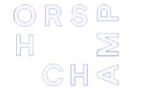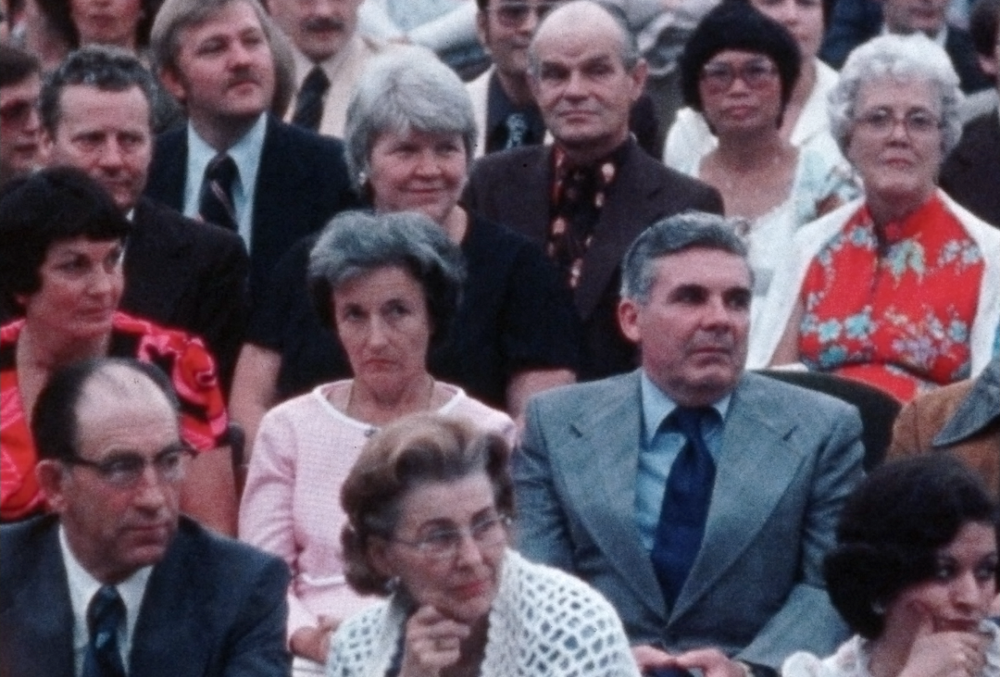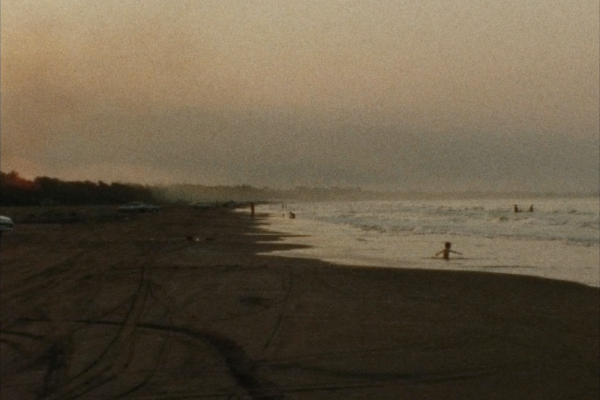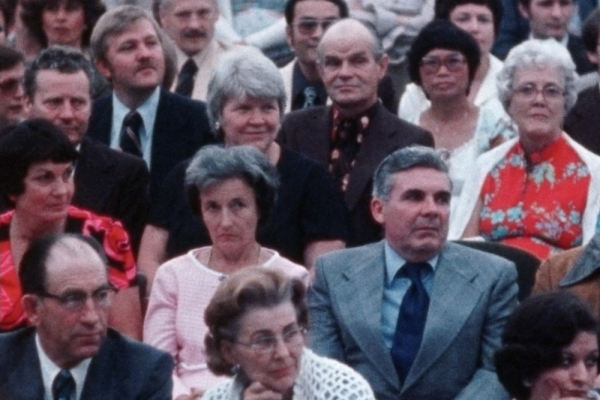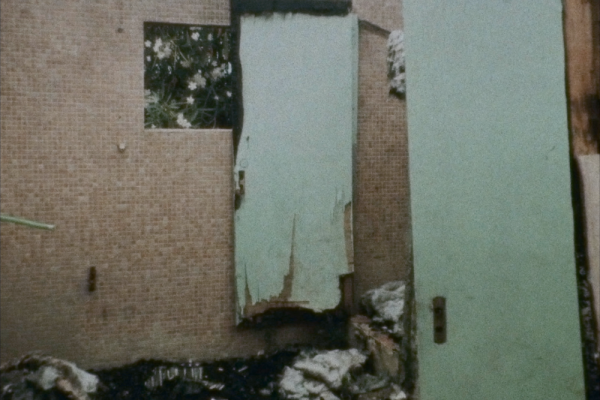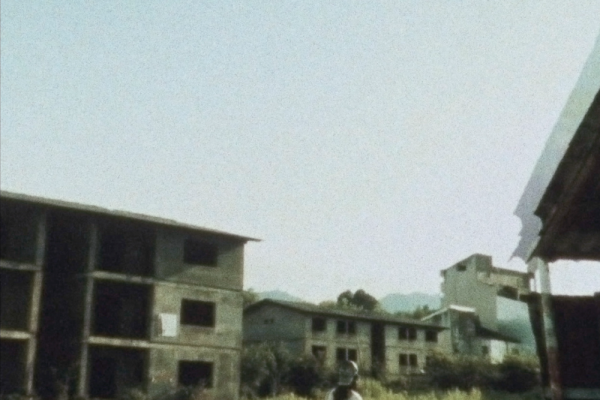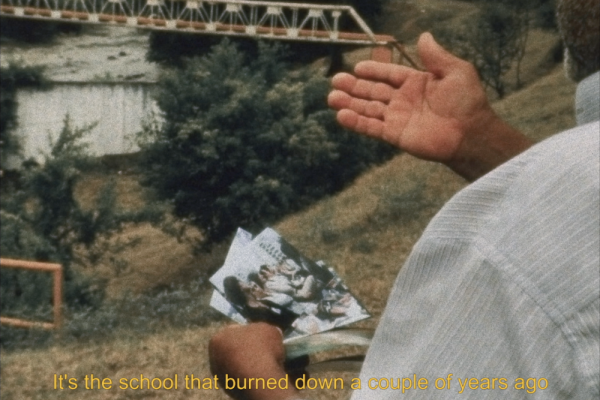Quand | When
28.10.2020 – 25.11.2020
Où | Where
Média | Media
HD
Billets | Tickets
“Chooka builds a subtle essay about visual memory and time, which becomes into a mirror of ourselves, of our collective and personal visuality, which is also part of our essence and knowledge.” –Ivonne Sheen, Desist Film,
Parastoo Anoushahpour, Faraz Anoushahpour, & Ryan Ferko collaborent depuis 2013. Leur pratique commune explore la tension des subjectivités multiples comme stratégie pour aborder le pouvoir inhérent des structures narratives.
Cet événement a été présenté en ligne dans le cadre de la série CRITIQUES. Une vidéo de l’œuvre a été présentée en ligne pour une durée limitée sur le microcinéma en ligne de la lumière collective.Un article d’ André Habib a été commandé par VISIONS pour l’occasion.L’article a été co-publié par Hors champ et Offscreen et est disponible ici.
This event was presented online as part of the CRITIQUES series. A video of the work was presented online for a limited time on la lumière collective’s online microcinema. An article by André Habib was commissioned by VISIONS for the occasion. The article was co-published by Hors champ and Offscreen and is available here.
PARASTOO ANOUSHAHPOUR, FARAZ ANOUSHAHPOUR & RYAN FERKO
Parastoo Anoushahpour, Faraz Anoushahpour, & Ryan Ferko collaborent depuis 2013. Leur pratique commune explore la tension des subjectivités multiples comme stratégie pour aborder le pouvoir inhérent des structures narratives. — [p-f-r.com]
« Au cours des cinq dernières années, le trio torontois composé de Faraz Anoushahpour, Parastoo Anoushahpour et Ryan Ferko a mis ses expériences diasporiques au service d’une série de projets uniques et fascinants, tant pour la galerie que pour le cinéma. Plaçant le lieu comme un aspect central de leur pratique, les artistes présentent le concept de la localité — que ce soit Berlin, Taipeu, Belgrade, Windsor, un village en Iran ou Cathedraltown à Markham — comme un message codé. Ainsi, leur travail cherche à la fois à décrypter ces lieux et à problématiser l’image par l’inclusion d’une narration spéculative et d’une imagerie dialectique, qui oscille entre matériel d’archives et de tournage de lieux évocateurs. » — [Chris Kennedy, TIFF]
Parastoo Anoushahpour, Faraz Anoushahpour, & Ryan Ferko have worked in collaboration since 2013. Their shared practice explores the tension of multiple subjectivities as a strategy to address the power inherent in narrative structures. – [p-f-r.com]
“Over the last five years, the Toronto-based trio of Faraz Anoushahpour, Parastoo Anoushahpour, and Ryan Ferko has brought their diasporic experiences to bear on a series of unique and fascinating projects for both the gallery and the cinema. Foregrounding place as a central aspect of their practice, the artists present location — whether it be Berlin, Taipei, Belgrade, Windsor, a village in Iran, or Cathedraltown in Markham — as cipher, and their work seeks to both decode these surroundings and trouble the image through speculative narration and dialectical imagery, which often oscillates between archival material and evocative location shooting.” – [Chris Kennedy, TIFF]
2018 | 16mm to digital | colour | sound | 20 min
En 1973, le Shah d’Iran a ordonné la construction d’une usine à papier dans la prospère province de Gilan, situé dans le nord du pays. Plusieurs ingénieurs étrangers du Canada et des États-Unis ont été engagés pour développer et gérer l’établissement, en amenant avec eux leurs familles ainsi qu’une espèce de pin auparavant inconnu dans la région. Leur séjour s’est toutefois brusquement arrêté en 1979, dû à la révolution iranienne, les forçant à fuir leur domaine pendant la nuit.
Chooka se déroule entre le site de cette usine et une maison familiale située dans un village voisin. Coïncidant avec la construction de l’usine, cette famille a accueilli la production des films de Bahram Beyzaie, The Stranger and The Fog. Tournée dans ce même village, le film commence lorsqu’un étranger inconscient dans un petit bateau est échoué sur le rivage. Après la révolution, Beyzaie retourne dans cette même maison pour y produire son film Bashu, The Little Stranger, qui se centre sur un jeune réfugié de guerre qui s’échappe du sud et se retrouve seul dans un petit village du nord.
En revenant dans ce paysage 40 ans plus tard, nous retrouvons cette famille. C’est l’été et le grand-père qui avait accueilli Beyzaie est maintenant décédé. Son fils adulte travaille à l’usine de papier tandis que son petit fils, nous dévoile les recoins secrets de la maison familiale. Par la médiation de l’écran et la photographie, Chooka entremêle des séquences originales avec des images d’archives documentaires et des fragments du cinéma de Beyzaie afin d’explorer la relation emmêlé entre un étranger et un hôte, une usine et un village, une équipe de tournage et une famille, des arbres exotiques et un paysage. — [Parastoo Anoushahpour, Faraz Anoushahpour, & Ryan Ferko]
In 1973, the Shah of Iran commissioned the construction of a paper factory in the lush northern province of Gilan. Foreign engineers from Canada and the United States were brought to develop and run the facility, bringing with them their families as well as a species of pine tree previously unknown to the region. Their stay, however, came to a sudden halt in 1979 with the Iranian revolution forcing them to flee the site overnight.
Chooka unfolds between the site of this factory and a rural family house located in a nearby village. Coinciding with the construction of the factory, this family hosted the production of Bahram Beyzaie’s film, The Stranger and The Fog. Shot in the same village, the film begins when an unconscious stranger drifts ashore in a small boat. After the revolution, Beyzaie returned to the same house to produce his film Bashu, The Little Stranger, about a young war refugee who escapes the south and ends up alone in a small northern village.
Returning to this landscape 40 years later, we meet the family again. It is summer and the grandfather of the family who hosted Beyzaie has passed away. His adult son is working at the paper factory while his grandson, between English classes, shows us the secret corners of his family’s house. Mediated through screens and photography, Chooka weaves original material with elements of archival documentary footage and fragments of Beyzaie’s cinema to explore the entangled relationship between a stranger and a host, a factory and a village, a film crew and a family, foreign trees and a landscape. – [ryanferko.com]
Translation to French © Jonatan Campbell




